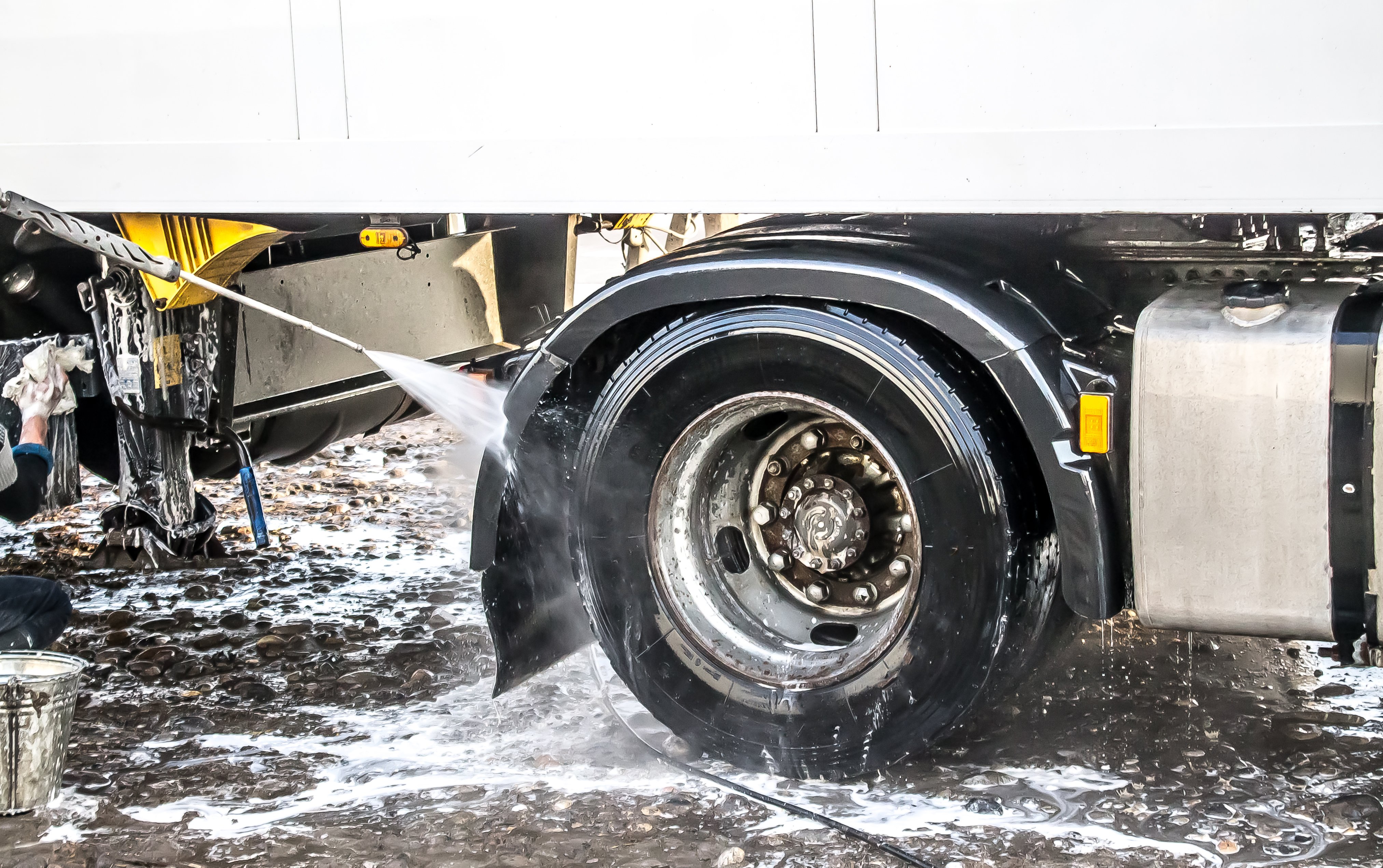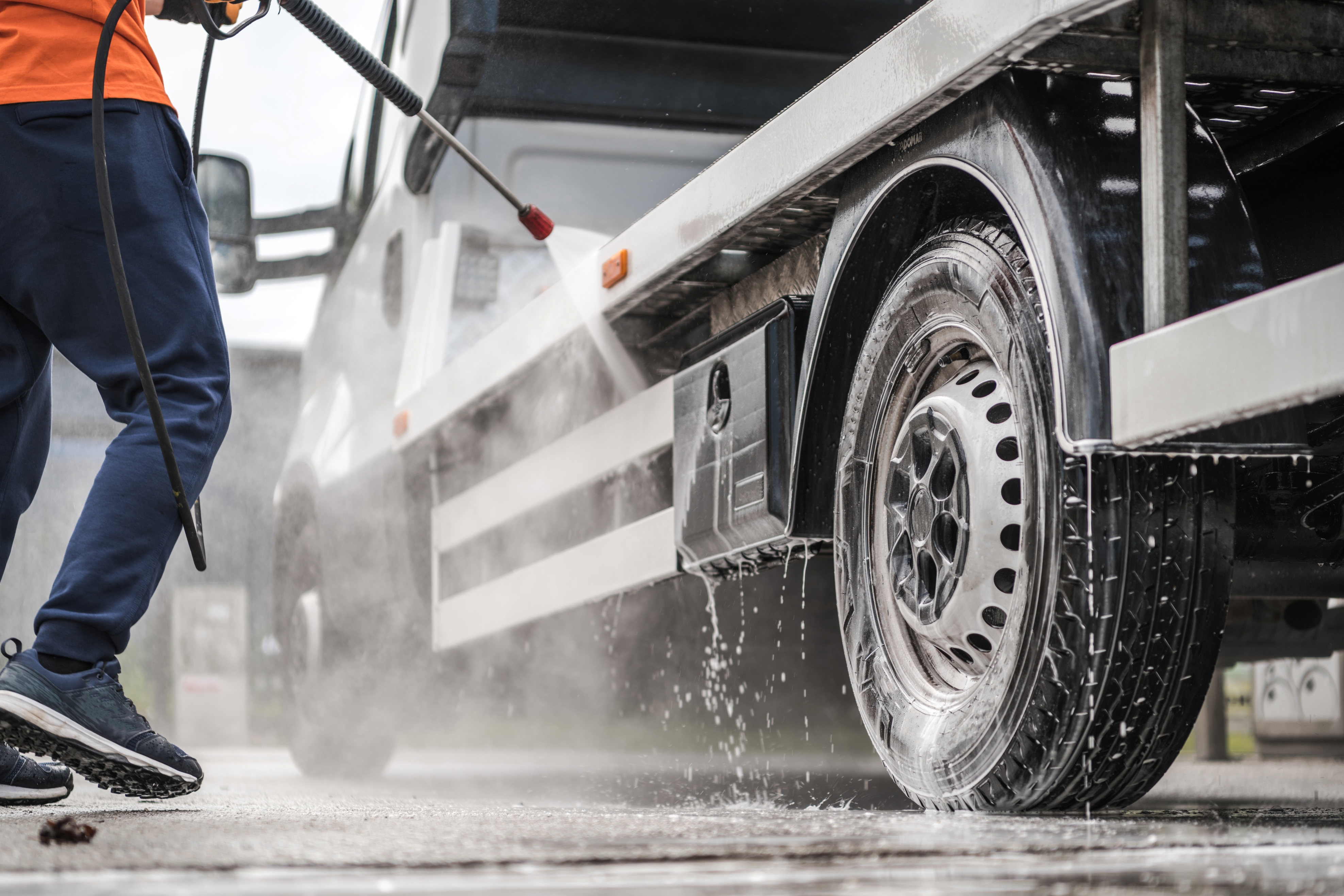
Miranda Blake
Jak znaleźć myjnię dla ciężarówek w pobliżu
Utworzony: 23.10.2024
•
Aktualizacja: 01.11.2024
Niezależnie od tego, czy przewozisz ładunki przez granice międzynarodowe, czy zarządzasz flotą ciężkich samochodów ciężarowych, zapewnienie dokładnego czyszczenia i konserwacji pojazdów może mieć znaczący wpływ na ich wydajność, żywotność i ogólną wydajność operacyjną. Na szczęście łatwo jest znaleźć niezawodną i wygodną myjnię dla ciężarówek w pobliżu swojej lokalizacji - czytaj dalej, aby dowiedzieć się, jak to zrobić.
Co obejmuje mycie ciężarówek?
Jeśli chodzi o czyszczenie pojazdów, ciężarówki wymagają specjalistycznych urządzeń i sprzętu, aby spełnić ich unikalne wymagania.
Lokalizacja i dostępność
Myjnie dla ciężarówek są strategicznie rozmieszczone wzdłuż głównych autostrad i zjazdów międzystanowych, zapewniając łatwy dostęp i minimalne zakłócenia w przepływie pojazdów ciężarowych. Takie umiejscowienie umożliwia kierowcom długodystansowym szybkie i wygodne dotarcie do niezbędnych usług czyszczenia bez wyzwań związanych z poruszaniem się po zatłoczonych ulicach miasta.
Wymagania dotyczące sprzętu i infrastruktury
Ponieważ samochody ciężarowe wymagają solidniejszych i mocniejszych maszyn, aby poradzić sobie z brudem, brudem i zanieczyszczeniami drogowymi, które gromadzą się na ich rozległych powierzchniach, usługi mycia zazwyczaj obejmują większe zatoki, większe prześwity i specjalny sprzęt - w tym myjki wysokociśnieniowe i szczotki o dużym zasięgu.
Zużycie zasobów i koszty
Mycie pojazdów ciężarowych generalnie wymaga większej ilości wody i energii elektrycznej ze względu na sam rozmiar i objętość pojazdów, a także potrzebę bardziej intensywnych procedur czyszczenia. Takie zwiększone zużycie zasobów przekłada się na wyższe koszty operacyjne, które są następnie odzwierciedlane w cenie.
Oferta usług i specjalizacja
Myjnie dla samochodów ciężarowych zazwyczaj koncentrują się na kompleksowym czyszczeniu zewnętrznym, w tym specjalistycznych usługach, takich jak odtłuszczanie silnika i mycie chlapaczy, aby sprostać wyjątkowym potrzebom i wyzwaniom związanym z utrzymaniem czystości ciężkich pojazdów użytkowych.

Poruszanie się po myjni ciężarówek z SNAP
Znalezienie odpowiedniego obiektu do swoich potrzeb może być trudnym zadaniem. W tym miejscu SNAP, dostawca zintegrowanych usług dla branży transportu drogowego, wkracza do akcji, aby uprościć Twoją podróż.
Rozbudowana sieć myjni dla ciężarówek
Nasza sieć obejmuje całą Europę, z ponad 230 lokalizacjami, które zaspokajają potrzeby operatorów pojazdów użytkowych. Są one strategicznie rozmieszczone wzdłuż głównych autostrad i węzłów transportowych, zapewniając kierowcom łatwy dostęp do niezbędnych usług czyszczenia bez zakłócania ich harmonogramów lub tras.
Zapoznaj się z naszą mapą SNAP i zobacz, jak znaleźć placówki w pobliżu.
Bezproblemowa integracja
SNAP Account integruje się z siecią myjni dla ciężarówek, umożliwiając kierowcom i operatorom flot wygodne płacenie za usługi za pomocą jednego, bezpiecznego konta. Eliminuje to potrzebę korzystania z gotówki lub wielu metod płatności, usprawniając proces mycia i zapewniając kompleksowe rozwiązanie do zarządzania wydatkami floty.
Indywidualne rozwiązania do mycia ciężarówek
Od wysokociśnieniowego mycia zewnętrznego po specjalistyczne mycie podwozia i odtłuszczanie silnika, myjnie SNAP są wyposażone w odpowiedni sprzęt i wiedzę, aby zapewnić dokładne i wydajne doświadczenie.
Bezpieczny i dostępny parking zajezdni
Oprócz naszych usług mycia ciężarówek, zapewniamy również sieć bezpiecznych i dostępnych parkingów Depot w całej Europie. Te dedykowane parkingi, dostępne wyłącznie dla posiadaczy kont SNAP, oferują ulepszone funkcje bezpieczeństwa i wygodę wstępnej rezerwacji miejsc parkingowych za pośrednictwem naszej aplikacji mobilnej intruck. Daje to kierowcom pewność, że ich pojazdy są bezpieczne i dostępne.
Zoptymalizowane zarządzanie flotą dzięki SNAP
Integrując nasz pełny pakiet usług, operatorzy flot mogą usprawnić swoje operacje i osiągnąć większą wydajność. Od bezproblemowego mycia ciężarówek i bezpiecznego parkowania po zarządzanie paliwem i płatności za przejazd przez Dartford Crossing, nasze rozwiązania umożliwiają menedżerom flot skupienie się na podstawowych celach biznesowych przy jednoczesnym maksymalnym wykorzystaniu możliwości technologii w celu optymalizacji procesów.
Zwiększ wydajność swojej floty dzięki SNAP
Utrzymanie czystości i dobrego stanu pojazdów użytkowych jest kluczowym aspektem zapewnienia doskonałości operacyjnej. Wykorzystując rozległą sieć wyspecjalizowanych obiektów SNAP, można zwiększyć wydajność i żywotność floty, jednocześnie upraszczając ogólne zarządzanie operacjami transportowymi.
Nasze zintegrowane usługi zapewniają kompleksowe rozwiązanie, które zaspokaja unikalne potrzeby branży pojazdów użytkowych. Umożliwiamy skoncentrowanie się na tym, co najważniejsze - bezpiecznym i wydajnym dostarczaniu ładunków, przy jednoczesnym zminimalizowaniu kłopotów i zmaksymalizowaniu rentowności firmy.
Tak więc, poruszając się po drodze, pozwól SNAP być zaufanym partnerem w zachowaniu nieskazitelnego stanu Twoich pojazdów. Zarejestruj się za darmo już dziś!



